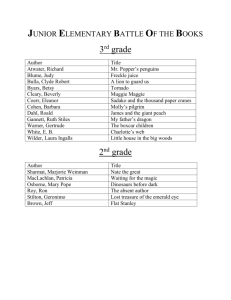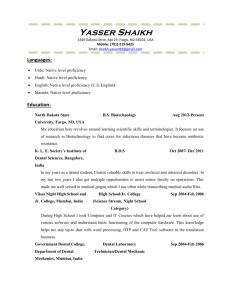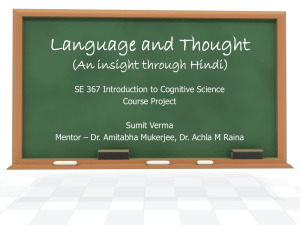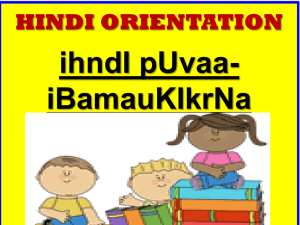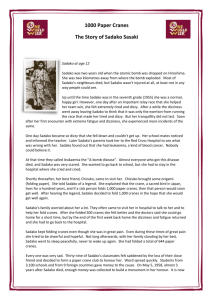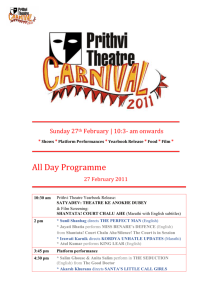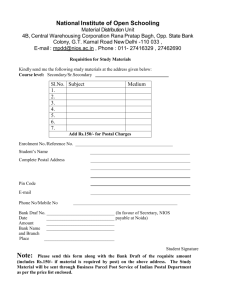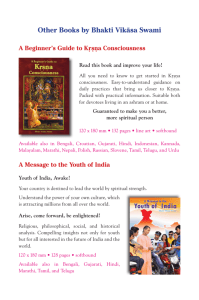good books - Arvind Gupta
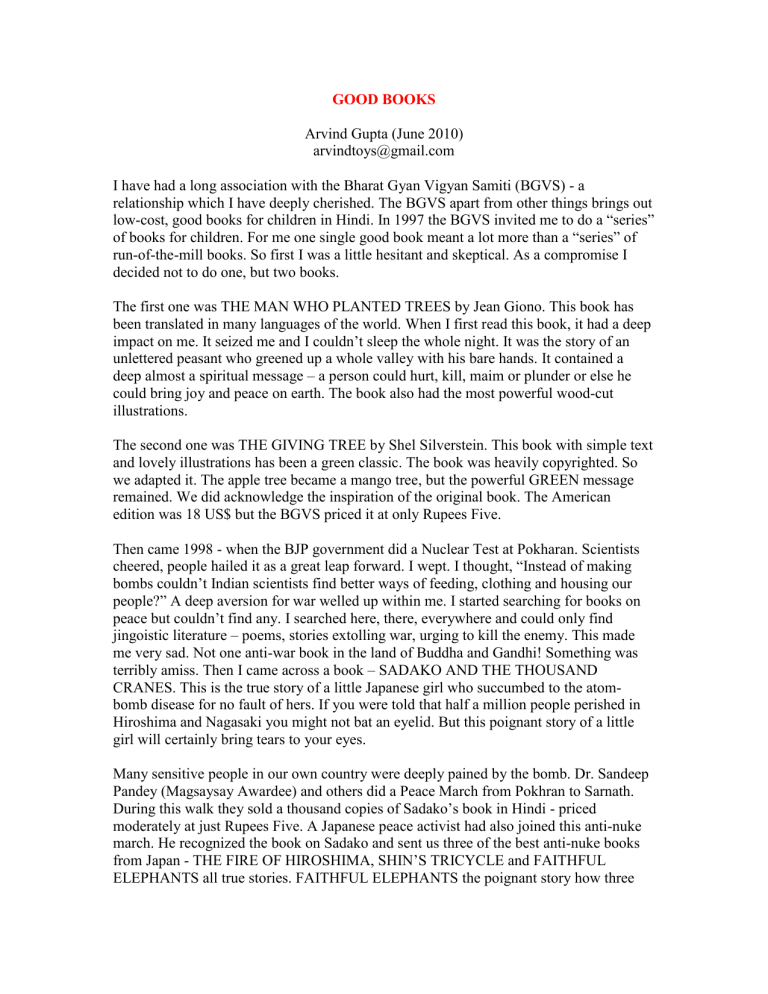
GOOD BOOKS
Arvind Gupta (June 2010) arvindtoys@gmail.com
I have had a long association with the Bharat Gyan Vigyan Samiti (BGVS) - a relationship which I have deeply cherished. The BGVS apart from other things brings out low-cost, good books for children in Hindi. In 1997 the BGVS invited me to do a “series” of books for children. For me one single good book meant a lot more than a “series” of run-of-the-mill books. So first I was a little hesitant and skeptical. As a compromise I decided not to do one, but two books.
The first one was THE MAN WHO PLANTED TREES by Jean Giono. This book has been translated in many languages of the world. When I first read this book, it had a deep impact on me. It seized me and I couldn’t sleep the whole night. It was the story of an unlettered peasant who greened up a whole valley with his bare hands. It contained a deep almost a spiritual message – a person could hurt, kill, maim or plunder or else he could bring joy and peace on earth. The book also had the most powerful wood-cut illustrations.
The second one was THE GIVING TREE by Shel Silverstein. This book with simple text and lovely illustrations has been a green classic. The book was heavily copyrighted. So we adapted it. The apple tree became a mango tree, but the powerful GREEN message remained. We did acknowledge the inspiration of the original book. The American edition was 18 US$ but the BGVS priced it at only Rupees Five.
Then came 1998 - when the BJP government did a Nuclear Test at Pokharan. Scientists cheered, people hailed it as a great leap forward. I wept. I thought, “Instead of making bombs couldn’t Indian scientists find better ways of feeding, clothing and housing our people?” A deep aversion for war welled up within me. I started searching for books on peace but couldn’t find any. I searched here, there, everywhere and could only find jingoistic literature – poems, stories extolling war, urging to kill the enemy. This made me very sad. Not one anti-war book in the land of Buddha and Gandhi! Something was terribly amiss. Then I came across a book – SADAKO AND THE THOUSAND
CRANES. This is the true story of a little Japanese girl who succumbed to the atombomb disease for no fault of hers. If you were told that half a million people perished in
Hiroshima and Nagasaki you might not bat an eyelid. But this poignant story of a little girl will certainly bring tears to your eyes.
Many sensitive people in our own country were deeply pained by the bomb. Dr. Sandeep
Pandey (Magsaysay Awardee) and others did a Peace March from Pokhran to Sarnath.
During this walk they sold a thousand copies of Sadako’s book in Hindi - priced moderately at just Rupees Five. A Japanese peace activist had also joined this anti-nuke march. He recognized the book on Sadako and sent us three of the best anti-nuke books from Japan - THE FIRE OF HIROSHIMA, SHIN’S TRICYCLE and FAITHFUL
ELEPHANTS all true stories. FAITHFUL ELEPHANTS the poignant story how three
elephants were starved to death is now in its 70 th
edition in Japan! This story shows how war devastates and degrades not only human beings but also animals!
Then I came across the world’s greatest anti-war book – THE STORY OF FERDINAND.
Munro Leaf wrote this immortal tale of 800 words in less than an hour. First published in
1936 this anti-war book sparked immediate controversy. Political critics charged it as a satirical attack on aggression. Hitler ordered the book burned while fellow dictator Stalin granted it privileged status as the only non-communist children’s book allowed in Poland.
Few people know that this book was very close to Gandhi’s heart. He even called it his favorite book. This is an immortal story of the passive resistance of a peaceful bull!
The scouting for world classics for children went on at a frantic pace. Often we were doing two books a month! The translation and the line drawings had by then become routine. The difficult part however, was to find the right books! This took me on a long trail. In the NCERT, New Delhi library I discovered another half a dozen wonderful books by Munro Leaf. However, the best books came from the American Elementary
School Library in New Delhi. It is certainly the best children’s library in India. This is due to the vision of its legendary librarian - Bandana Sen who was kind enough to share these treasures with me. Kamala Bhasin – activist, feminist was kind to give permission to reprint her book WHO IS A BOY, WHO IS A GIRL? Later on we translated and printed the classic book DANGER SCHOOL - perhaps the most subversive cartoon book in the history of education! Many people helped in this endeavor of reaching out good books to our children.
So, starting with just two books we ended up with over a hundred. These books covered a wide canvas – anti-nuke, anti-war, peace, education, environment, books for “special” children, and some of the best children’s books from across the world. These books did not aspire to compete with commercial or government outfits. The humble attempt was to
“fill” in glaring gaps, to publish books which no one else did. Forty of these books were printed in a bilingual - Hindi / English format and they got a thumping response. In today’s world – English is the language of opportunity. A bilingual book makes the second language more comprehensible to children. This series of a hundred books named
- the Balvachan Series has now sold over a million copies.
These hundred odd books were packed in 5 CD’s with all the Pagemaker files, illustrations, covers etc. These were shared generously with activist publishers in other states. They just needed to replace the “Hindi” text with its Telugu, Marathi or Gujarati translation. And a new book could be created in a single day! Because of dearth of such libertarian literature most of these books have been translated in Telugu, Marathi and
Gujarati.
In retrospect I am deeply indebted to the BGVS especially two dear friends – Dr. Vinod
Raina and K. K. Krishnakumar who gave me a free hand. They perhaps had innate faith in my honesty and ability. So they just let me do what I wanted, without any meetings or interference. All these books could not have been done without the help of one wonderful individual Abhay Jha – a very sensitive human being and my computer teacher.
These books have been criticized on several counts - they are not original but simply translations. The BGVS has not nurtured any original talent. Some of the books do not relate to the reality of the Indian child - are not contextual. They talk about far away lands. All these are valid critiques and are to be welcomed.
In our country the educational terrain is very stony and harsh. There is no soil to nurture young minds. Even if there was a good seed it will wilt away for lack of nourishment.
These books are a humble attempt to create a “fistful of soil” and to sow seeds of peace.



